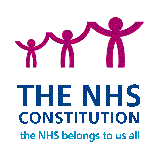FD Handbook
The following guidance outlines some specific issues and recommendations with respect to appropriate dress for clinical settings and examinations for dentists in training. The paper has been discussed and agreed by COGPED, COPDEND and COPMeD (2011).
The guidance relates to dress only but it remains the responsibility of all dentists to ensure that their appearance is compatible with their professional role and does not, in any way, impede the effective delivery of the roles and responsibilities of a dentist; including communication with patients, relatives, carers and other staff.
Conventionally in the UK, formal professional practice between dentist and patients is appropriately marked by a certain formality of dress. It is, therefore, legitimate to require trainees to dress in this fashion. This would exclude among others, inappropriately revealing styles, such as low-cut necklines and mini-skirts or clothes that are not clean (clearly clothes made unclean during an emergency/acute event would be an exception to this). In addition, the wearing of dangling jewellery/accessories or hairstyles that could interfere with the physical examination of or interaction with a patient are also regarded as inappropriate.
COPMeD Revision 2011
Guidance is available from NHS Professionals on dress codes and their application throughout the NHS. It highlights that there are legitimate reasons for enforcing a dress code including Health and Safety considerations, practicality, governance and professionalism.
It is recommended that such policies should be reviewed regularly, be consistent, be clear and applied with sensitivity. Consultation with special interest groups by Local Education Providers (LEPs), and persons with specific religious or cultural requirements is recommended where relevant.
None of these factors are inconsistent with a general duty to make reasonable efforts to accommodate needs and preferences arising from religious or cultural factors. An example of this might be a reasonable effort to accommodate to a religious objection to a ‘bare below elbows’ policy by the provision of special gloves or protectors by a LEP; though any such adjustment must be deemed “feasible” by the LEP. These issues are mainly the concern of the employer of the trainee, rather than the HENW (Manchester Office) [whose role may be as a commissioner, provider of education, or both]. Nonetheless, Deaneries should be mindful of relevant GMC or GDC advice that a dress code may require the removal of any garment that inhibits clinical communication; such as those that cover or obscure the face.
A distinction should be drawn between ‘patient facing’ professional roles, and activity in an educational context alone. For Deaneries, in the latter case, clinical dress codes may not be held to apply in informal settings, but they will apply, in formal processes such as recruitment to specialty training (including GP), professional, examinations, ARCP panels and other more formal HENW (Manchester Office)/specialty processes.
Recruitment and selection may involve contact with simulated patients who should be considered and treated as if they were patients, for clinical communication, physical examination and assessment of clinical performance. Irrespective of those additional considerations, recruitment and selection panels will expect the candidate to have their face exposed.
There is some case law on the application of a dress code in a teaching context. A tribunal upheld the right of a local authority to require the removal of a face veil by a teacher as non-discriminatory, given the importance of effective communication, and the consistent application of such a policy. This decision was sustained at appeal [see below]. These issues are clearly part of a larger agenda concerning respect for principles of equality and diversity fully articulated in GMC standards Domain 3, to which PG Deaneries are obliged to conform.
Professional examinations form part of the assessment framework of most GMC approved specialty curricula. In most instances (and where it is not a requirement, this should be expressly stated in guidance for professional examinations), the same dress code will apply for professional examinations as it does for day to day clinical practice/contact with patients; this means that forms of dress should not constrain the candidates ability to demonstrate recognised skills. Forms of dress that cover the face will normally be deemed inappropriate in such examinations.
•Deaneries advise trainees to observe the legitimate dress codes of employing Local Education Providers i.e. in Dental Foundation the employing Practice
•This may include maintaining appropriate standards of appearance, dress and personal hygiene [for example the avoidance of large earrings, inappropriate skin exposure, unstable shoes etc.].
•Differentiation between male and female dress codes is legitimate, given application of the criteria listed above.
•Garments that may interfere with clinical communication, and its assessment, should be removed at appropriate times.
•Similarly examiners and those involved in recruitment should require the removal of garments that obscure the face during the exam or recruitment process, and have regard to the maintenance of standards of dress as above.
Final Version
COPMeD (David Sowden) amended to cover dental training
October 2011

